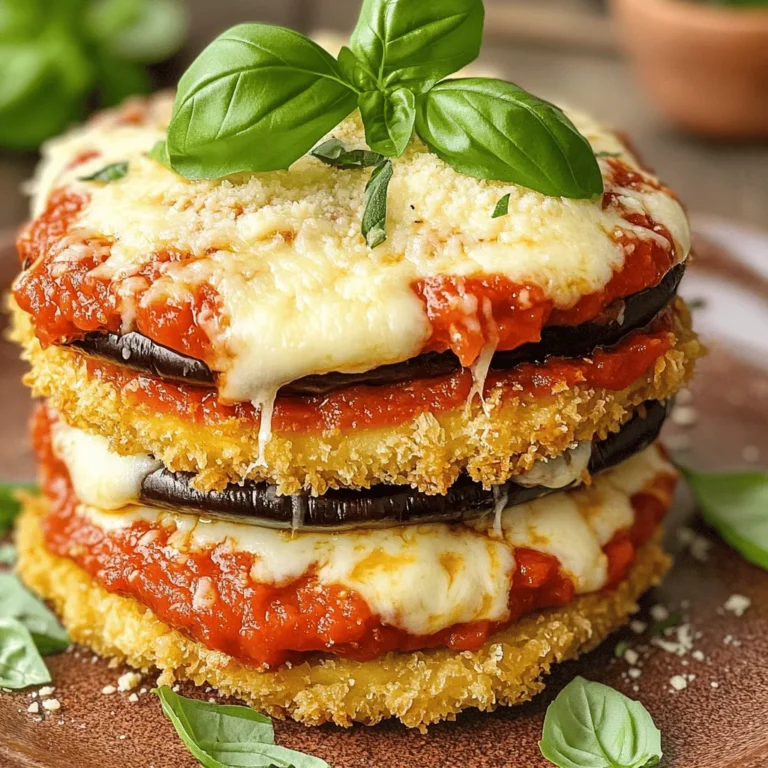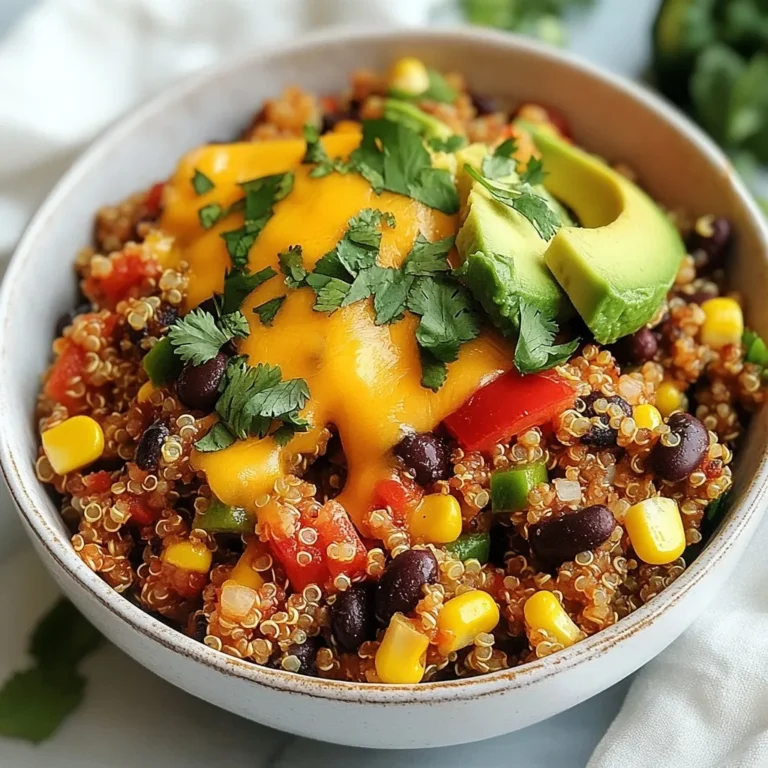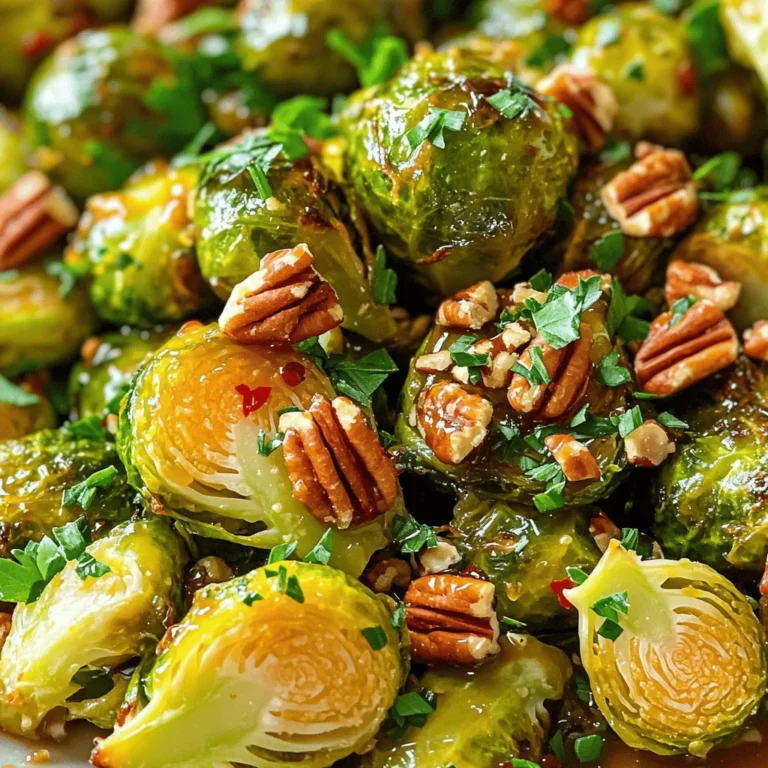Cilantro Lime Rice Bowls Fresh and Flavorful Meal
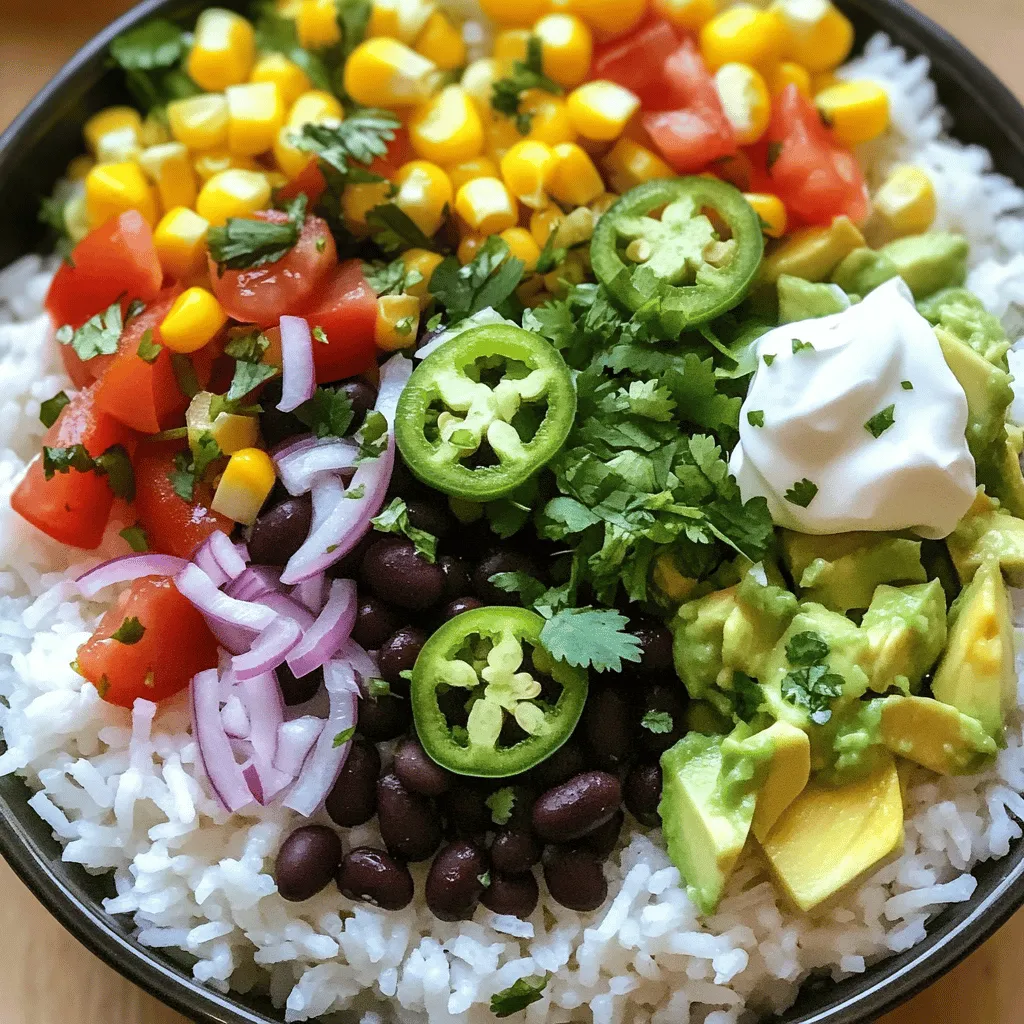
Looking for a fresh and flavorful meal? Cilantro lime rice bowls are your answer! Packed with zesty flavors and vibrant ingredients, these bowls are easy to make and full of nutrition. Whether you’re cooking for yourself or entertaining friends, I will guide you through each step. From essential ingredients to cooking tips and tasty variations, you’ll find everything you need to create a delicious dish that everyone loves!
Ingredients
List of Essential Ingredients
To make cilantro lime rice bowls, you need the following key ingredients:
– 1 cup long-grain white rice
– 2 cups vegetable broth (or water)
– 1/4 cup fresh cilantro, finely chopped
– 1 lime (zested and juiced)
– 1 tablespoon olive oil
– 1/2 teaspoon salt
– 1/4 teaspoon black pepper
– 1 cup black beans, drained and rinsed
– 1 cup corn (fresh or frozen)
– 1 avocado, diced
– 1 medium tomato, diced
– 1/4 red onion, finely chopped
– 1/2 teaspoon chili powder
Suggested Optional Toppings
You can make your bowls even better with these optional toppings:
– Sliced jalapeños
– Sour cream
– Crumbled feta cheese
Ingredient Substitutions
If you need swaps for any ingredients, consider these options:
– Use brown rice instead of white rice for more fiber.
– Swap vegetable broth for chicken broth for added flavor.
– Fresh cilantro can be replaced with parsley if you prefer.
– If you don’t have lime, lemon juice works in a pinch.
– For a dairy-free option, use a plant-based sour cream.
These ingredients create a fresh and flavorful meal that is easy to customize to your taste.
Step-by-Step Instructions
Preparation of the Rice
Start by rinsing 1 cup of long-grain white rice under cold water. This step washes away excess starch. You want the water to run clear. Next, in a medium saucepan, combine the rinsed rice and 2 cups of vegetable broth or water. Bring it to a rolling boil on medium-high heat. Once it boils, cover the pan, lower the heat, and simmer for 15 to 20 minutes. The rice should be tender and all the liquid absorbed. After cooking, let the rice sit for 5 minutes with the lid on. Then, fluff the rice in a large bowl using a fork.
Mixing the Cilantro Lime Mixture
Now, it’s time to add flavor! In the bowl with your fluffed rice, pour in 1 tablespoon of olive oil. Next, add the juice and zest from 1 lime, 1/2 teaspoon salt, and 1/4 teaspoon black pepper. Mix everything well. Finally, gently fold in 1/4 cup of finely chopped fresh cilantro. This will give your rice a bright and fresh taste.
Combining the Black Bean and Corn Salad
In a separate bowl, combine 1 cup of drained and rinsed black beans and 1 cup of corn. Add in 1 diced avocado, 1 diced medium tomato, and 1/4 finely chopped red onion. For a little spice, sprinkle in 1/2 teaspoon chili powder. Mix all the ingredients gently. You want to keep the avocado in nice pieces for a pretty salad.
Assembling the Rice Bowls
To put it all together, scoop a generous portion of cilantro lime rice into each bowl. Then, top the rice with a hearty helping of your black bean and corn salad. You can add sliced jalapeños for heat, a dollop of sour cream for creaminess, or crumbled feta for a tangy finish. Each bowl should look colorful and inviting. For a fresh touch, serve with a lime wedge on the side.Enjoy your delicious, fresh meal!
Tips & Tricks
How to Cook Fluffier Rice
To cook fluffier rice, start by rinsing it well. Rinsing removes extra starch. This step is key to keeping each grain separate. Use cold water until it runs clear. Next, use a proper water-to-rice ratio. For long-grain white rice, two cups of broth or water per cup of rice works great. Bring it to a boil. Once it boils, cover, reduce heat, and let it simmer. The rice needs about 15 to 20 minutes to cook. After cooking, let it sit covered for five minutes. Fluff it gently with a fork to keep it airy.
Best Practices for Serving
When serving cilantro lime rice bowls, presentation matters. Start with a generous scoop of rice. Use a large bowl for each serving. This gives plenty of room for toppings. Layer the black bean and corn mixture on top. This adds color and flavor. Consider using a lime wedge on the side. It brightens the dish and invites guests to add a splash of lime juice. Keep toppings neat. If you choose jalapeños or sour cream, place them on top. This creates a visually appealing meal.
Storing Leftovers Properly
If you have leftovers, store them correctly to keep them fresh. Place the rice and toppings in separate containers. This prevents sogginess. Use airtight containers for best results. Refrigerate your leftovers within two hours of cooking. They can last in the fridge for about three days. To reheat, add a splash of water for moisture. Heat gently in the microwave or on the stovetop. This helps maintain the rice’s fluffy texture. For a longer shelf life, consider freezing portions. They can last up to three months in the freezer.
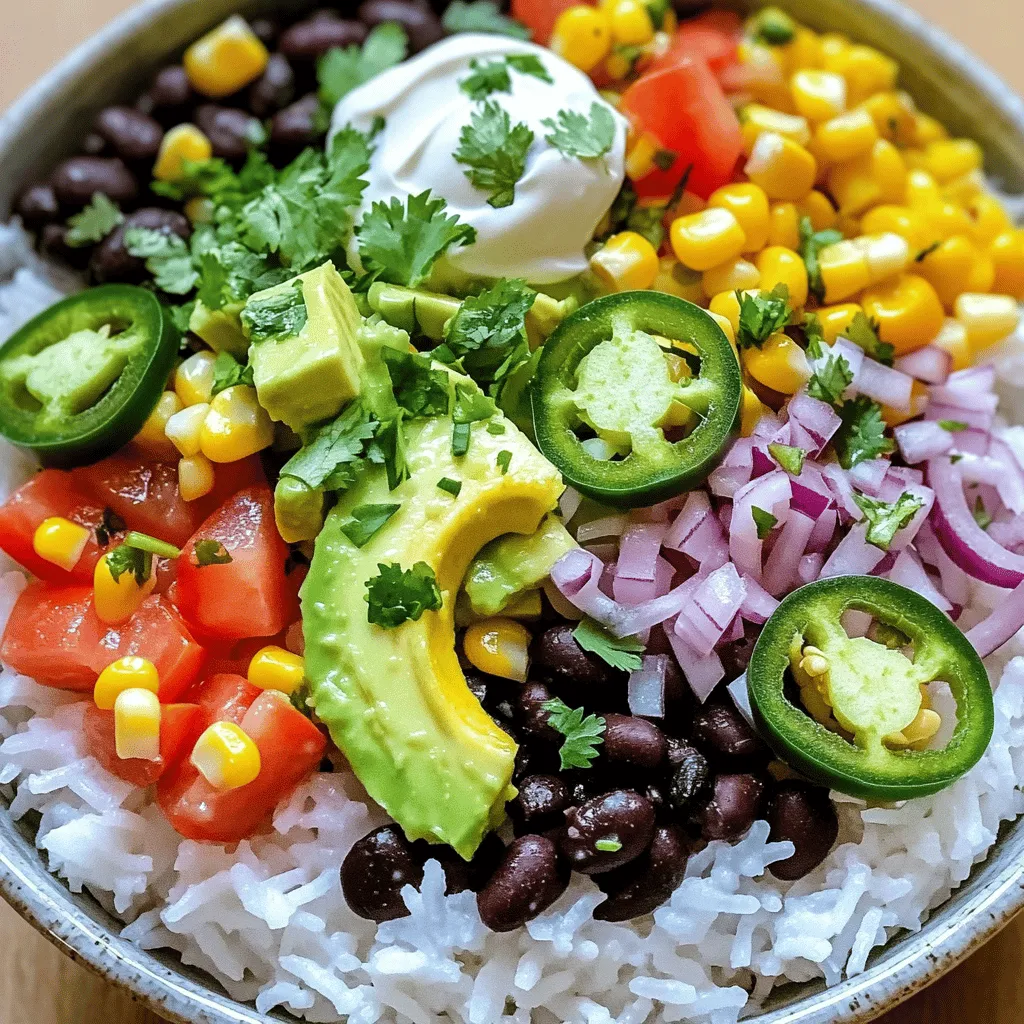
Variations
Vegetarian vs. Vegan Options
Cilantro lime rice bowls are quite flexible. They fit a vegetarian diet well. You can use vegetable broth for the rice. This adds great flavor. For a vegan option, skip any dairy toppings like sour cream or cheese. Instead, try using avocado for creaminess. This keeps your meal fresh and bright while still being hearty.
Protein Additions for a Heartier Meal
For those who want more protein, there are many choices. You can add grilled chicken or shrimp for a tasty twist. If you prefer plant-based options, try adding tofu or tempeh. Both soak up flavors and give a nice texture. You can also mix in chickpeas or lentils for added protein and fiber. These additions make the meal more filling and satisfying.
Flavor Enhancements and Spice Levels
To kick up the flavor, consider adding spices. A pinch of cumin or smoked paprika can deepen the taste. If you like heat, slice some jalapeños or add a dash of hot sauce. You can also mix in fresh herbs like parsley for more freshness. Experiment with these enhancements to find your perfect balance. Each tweak brings a new flavor profile to the bowl.
Try these variations to make your cilantro lime rice bowls even more exciting.
Storage Info
Refrigeration Guidelines
Once you finish your cilantro lime rice bowls, let them cool. Place them in an airtight container. The rice and toppings can stay fresh for up to four days in the fridge. This keeps the flavors intact and makes meal prep easy.
Freezing Instructions
If you want to save some for later, freezing is great. First, let the bowls cool completely. Then, store rice and toppings separately in freezer-safe containers. They can last up to three months in the freezer. When you’re ready to eat, simply thaw them in the fridge overnight.
Reheating Tips
To reheat, add a splash of water to the rice and cover it. Heat in the microwave for 1-2 minutes. Stir halfway through to warm evenly. For the toppings, heat them in a pan over low heat. This method keeps everything tasty and fresh.
FAQs
Can I use brown rice instead of white rice?
Yes, you can use brown rice. It will take longer to cook, about 40-45 minutes. Brown rice has more fiber and nutrients. Just keep in mind that it has a nuttier flavor and a chewier texture. You may also need to adjust the liquid amount. Use about 2 1/2 cups of vegetable broth for every cup of brown rice.
How long do cilantro lime rice bowls last in the fridge?
Cilantro lime rice bowls can last for 3 to 5 days in the fridge. Store them in an airtight container to keep them fresh. The rice may absorb more moisture over time, so it might get a bit mushy. To avoid this, consider storing the rice and toppings separately.
What can I serve with cilantro lime rice bowls?
You can serve many things with cilantro lime rice bowls. Grilled chicken or shrimp adds protein and flavor. For a vegetarian option, try adding roasted veggies or tofu. A side of tortilla chips and salsa makes a great crunchy addition. You can also pair them with a fresh salad or guacamole for extra creaminess. Explore these options to make your meal even more delicious!
In this blog post, I covered essential ingredients and step-by-step instructions for creating delicious cilantro lime rice bowls. I shared tips for fluffier rice and how to serve and store leftovers. You can also explore variations, like vegetarian options and protein additions. These bowls are not only tasty but also easy to customize. Remember, experimenting with flavors makes cooking fun and personal. Enjoy your cooking journey, and don’t be afraid to make it your own!
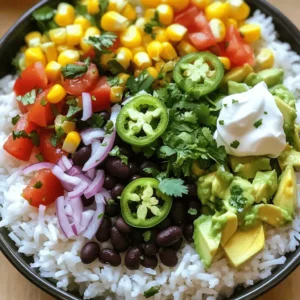

![- 1 cup stone-ground grits - 4 cups water or chicken broth - 1 pound shrimp, peeled and deveined The star of this dish is the stone-ground grits. They give a rich and creamy base. Use water or broth for cooking to add more flavor. I recommend chicken broth for a savory kick. For the shrimp, choose fresh or frozen. Just make sure they are peeled and deveined. - 4 slices of smoked gouda cheese - 1 teaspoon smoked paprika - 1/2 teaspoon cayenne pepper (adjust based on your spice preference) Smoked gouda brings a unique taste that pairs well with shrimp. You can also try other cheeses, like cheddar. For spices, smoked paprika adds depth, and cayenne gives a nice kick. Adjust the cayenne to suit your heat preference. - 3 cloves garlic, minced - 1 small yellow onion, finely chopped - 1 red bell pepper, diced - 3 tablespoons unsalted butter, divided - 1 tablespoon olive oil - Salt and black pepper, to taste - 2 green onions, chopped (for garnish) - Fresh parsley, chopped (for garnish) Fresh vegetables like onion, bell pepper, and garlic add great flavor. They also give the dish a lovely texture. Use unsalted butter and olive oil for cooking. Finally, top it all with green onions and parsley for color. These garnishes brighten the dish and add freshness. For the complete recipe, check out the Full Recipe section. 1. In a large pot, bring 4 cups of water or chicken broth to a rolling boil. 2. Slowly whisk in 1 cup of stone-ground grits to avoid lumps. 3. Once mixed, reduce the heat to low. 4. Let the grits simmer, stirring occasionally, until thick and creamy, about 20-25 minutes. 5. If the grits get too thick, stir in more water or broth to reach your desired texture. 1. While the grits cook, heat 1 tablespoon of olive oil and 1 tablespoon of butter in a large skillet over medium heat. 2. Add 1 small yellow onion, 1 red bell pepper, and 3 cloves of minced garlic. 3. Sauté for about 5 minutes until the veggies are tender and fragrant. 4. Next, add 1 pound of shrimp to the skillet. 5. Season with 1 teaspoon of smoked paprika, 1/2 teaspoon of cayenne pepper, and a pinch of salt and black pepper. 6. Cook until the shrimp turn pink and opaque, about 3-4 minutes. 1. Reduce heat to low. Pour in 1/2 cup of heavy cream. 2. Add 4 slices of smoked gouda cheese and stir until melted. 3. Taste and adjust seasoning if needed, then remove from heat. 4. To serve, ladle the creamy grits into bowls. 5. Top each bowl with the shrimp mixture. 6. For a finishing touch, add a pat of remaining butter on top. 7. Garnish with chopped green onions and fresh parsley for color and flavor. For the complete recipe, check the [Full Recipe]. To make grits creamy, you need the right consistency. Start with a good ratio of liquid to grits. If your grits are too thick, add more water or broth. Stir often to keep them smooth and prevent lumps. Use a whisk for the best results. This method helps blend the grits well with the liquid. Cooking shrimp well makes a big difference. Sauté them quickly over medium heat. This keeps them juicy and tender. Adjust the spice level by adding more cayenne if you like heat. For a milder dish, cut back on the cayenne. You can also try adding lemon juice for a bright flavor. A great dish looks as good as it tastes. Garnish your shrimp and grits with chopped green onions and fresh parsley. This adds color and freshness. Serve the dish in rustic bowls to enhance the comfort feel. For extra flair, add a lemon wedge on the side. It gives a nice pop of flavor and makes the meal inviting. {{image_4}} You can switch to cauliflower grits for a lighter option. Cauliflower grits are low in carbs and packed with nutrients. Simply steam or boil cauliflower, then blend until smooth. You can mix in some cheese for flavor. For shrimp, consider using smaller shrimp or even shrimp alternatives. Shrimp can be high in calories, so choose lower-calorie fish or plant-based options. This keeps the dish tasty without the extra calories. Adding different cheeses can take your dish to a new level. Try cheddar for a sharp kick, or parmesan for a nutty flavor. Each cheese brings its own unique taste. You can also spice things up by incorporating different spices. Add garlic powder for depth, or Cajun seasoning for a kick. Experimenting with spices lets you find the flavor you love the most. Cajun-style shrimp and grits are a fun way to mix things up. Use andouille sausage and a spicy blend of seasonings. This adds a bold kick and deep flavor to the dish. Traditional Southern touches can make your meal more authentic. Use local ingredients or add a sprinkle of Old Bay seasoning. This pays homage to the classic Southern roots of this comfort food. To store shrimp and grits, let them cool first. Place leftovers in an airtight container. Keep them in the fridge for up to three days. Make sure to separate the shrimp and grits if you can. This helps keep the texture nice. When you’re ready to enjoy leftovers, use gentle heat. You can microwave them, but add a splash of water or broth. This keeps the grits creamy. Stir often and heat until warm. You can also reheat on the stove over low heat. Just add a little liquid and stir. Yes, you can freeze shrimp and grits! However, the texture may change. To freeze, let the dish cool completely. Then, use a freezer-safe container. Store for up to three months. When you’re ready to eat, thaw in the fridge overnight. Reheat on the stove with a splash of broth or water for best results. I recommend using fresh shrimp if you can find it. Fresh shrimp has a sweet taste and firm texture. If fresh shrimp is not available, frozen shrimp also works. Just ensure it is peeled and deveined. Thaw the shrimp in the fridge overnight for the best results. Yes, you can spice up your shrimp and grits! Add cayenne pepper for heat. You can also mix in hot sauce or diced jalapeños. Start with a little and taste as you go. This way, you control how spicy it gets. You can make shrimp and grits vegetarian easily. Swap shrimp for sautéed mushrooms or roasted cauliflower. Use vegetable broth instead of chicken broth. For creaminess, you can use coconut milk or a plant-based cream. This keeps the dish rich and delicious without the shrimp. For the full recipe, check out the Savory Shrimp & Grits Delight. Shrimp and grits are a dish filled with rich flavors and textures. We explored the main ingredients, like stone-ground grits and shrimp, and how spices and cheeses enhance the taste. I provided step-by-step cooking instructions, tips for creamy grits, and serving ideas. We also looked at healthy variations and how to store leftovers. Now, you can make this dish your own. Try new ingredients or adjust the spices to fit your taste. Enjoy your cooking journey!](https://goldendishy.com/wp-content/uploads/2025/06/edb6efca-056a-45fa-9dae-09e61936659d-768x768.webp)

